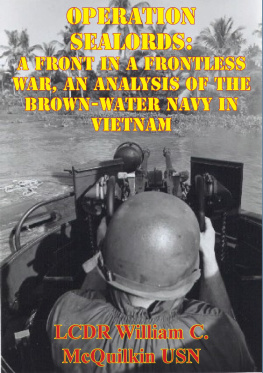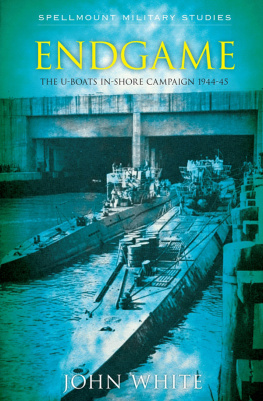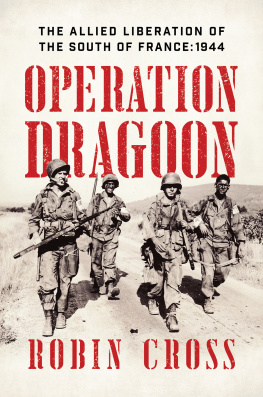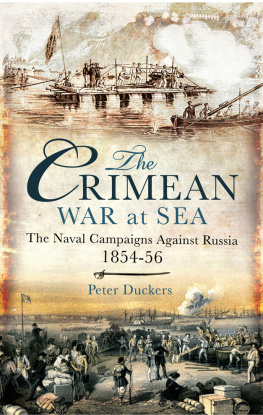
This edition is published by PICKLE PARTNERS PUBLISHINGwww.picklepartnerspublishing.com
To join our mailing list for new titles or for issues with our books picklepublishing@gmail.com
Or on Facebook
Text originally published in 2001 under the same title.
Pickle Partners Publishing 2014, all rights reserved. No part of this publication may be reproduced, stored in a retrieval system or transmitted by any means, electrical, mechanical or otherwise without the written permission of the copyright holder.
Publishers Note
Although in most cases we have retained the Authors original spelling and grammar to authentically reproduce the work of the Author and the original intent of such material, some additional notes and clarifications have been added for the modern readers benefit.
We have also made every effort to include all maps and illustrations of the original edition the limitations of formatting do not allow of including larger maps, we will upload as many of these maps as possible.
Operation SEALORDS: A Study In The Effectiveness Of The Allied Naval Campaign Of Interdiction.
Eugene F. Paluso, Lieutenant Commander, United States Navy
TABLE OF CONTENTS
Contents
TABLE OF CONTENTS
REQUEST FROM THE PUBLISHER
Executive Summary
Thesis: The Vietnam War allied naval barrier operations to interdict the enemy infiltration of men and supplies coming across the Cambodian border into the Mekong Delta region was successful only through the utilization of joint combined naval, ground, and air assets.
Discussion: The United States Navy involvement in the Vietnam war prior to 1964 was primarily blue water operations. In 1964, the Vietnam Delta Infiltration Study Group was tasked to conduct a comprehensive study of the problem of enemy infiltration of men and supplies into South Vietnam Mekong Delta region across the Cambodia and Laos borders. The findings of the group were published in the Bucklew Report and concluded that the border infiltration problem was significant and needed to be stopped in order to ensure victory in the Vietnam War. The recommendations were for the U.S. to develop an extensive riverine operations capability to assist the South Vietnamese military in conducting counter-insurgency operations to stop the infiltration problem.
The U.S. Navy moved from deep blue water operations to near shore blue water operations with the Operation MARKET TIME patrols, which encompassed larger seagoing craft patrolling the coast to forty miles out to sea. These operations led to the first brown water operations during Operation GAME WARDEN which patrolled the major river systems in the Mekong Delta region in order to interdict enemy movements along the rivers. Soon these patrols revealed the need to ground troops to control the riverbanks in order for the patrols to be effective.
The Tet offensive of 1968 revealed that the MARKET TIME and GAME WARDEN patrols were not totally containing the infiltration problem. Operation SEALORDS established patrol barriers that were designed specifically to stop the influx of men and supplies crossing the Cambodian border and sustaining enemy forces operating in the Mekong Delta and Saigon areas. SEALORDS barriers were systematically set up to take control of the Mekong Delta region and deny the enemy the freedom of movement enjoyed for years prior.
Conclusion: Operation SEALORDS was extremely effective under U.S. control. The enemy could no longer mount large-scale offensives from within the Mekong Delta region as in the 1968 Tet offensive. The tactics, techniques, and procedures developed during the operation were key to the overall success of the counter-insurgency effort.
The overarching key to the success of the operation was the joint combined efforts of the naval, ground, and air forces. Barrier interdiction operations cannot be effectively accomplished without joint efforts. Inter-service rivalry initially hampered operational efforts; however, the inter-service efforts eventually led to the operations success.
List of Illustrations
1MARKET TIME Coastal Zones
2GAME WARDEN Patrol Areas
3Patrol Boat Riverine (PBR) Photo
4Fast Patrol Coastal (PCF) Photo
5Assault Support Patrol Boat (ASPB)
6Monitor Boat Photo
7OV-10 and Photos
8Enemy Infil Routes for III/IV Corps
9SEALORDS Barrier Map
10Operation SEARCH TURN Map
11Operation FOUL DECK Map
12Operation GIANT SLINGSHOT Map
13Operation BARRIER REEF Map
14Artillery Barge Example
15Helicopter Slinging of a PBR
16Operation READY DECK Map
17SEALORDS River Basing System Map
18SEAFLOAT Photo
19Operations SEAFLOAT and BREEZY COVE Map
List of Tables
No.Description
1GIANT SLINGSHOT First Month Totals
2SEALORDS Statistics The First Year 1968-1969
3SEALORDS USN/VNN Operations Designations
4SEARCH TURN Totals
5GIANT SLINGSHOT Totals
6Rung Sat Totals
7BARRIER REEF Totals
8READY DECK Totals
9BREEZY COVE Totals
10FOUL DECK/TRAN HUNG DAO Totals
Chapter 1: BACKGROUND ON NAVAL OPERATIONS
The forward gunner of the cover boat peered miserably through the gloom, wondering if the rain would fall all night or if would stop later so the mosquitoes might have a turn at inflicting their own special brand of torture. Suddenly, in the strobing flashes of lightning, his eye caught a movement it was a North Vietnamese soldier less than thirty yards awayIn response to the chiefs orders, the two PBRs simultaneously ignited their engines and backed away from the bank, opening fire at the point blank targets as they went...The next morning, ground troops swept the area and found forty- one enemy soldiers dead in the jungle. The PBRs recovered eight others from the river. There were no friendly casualties. {1}
In 1968, the United States Navy was fully engaged in the counter-insurgency war against the Viet Cong (VC) and North Vietnamese Army (NVA) in South Vietnam. The number of U.S. Navy personnel serving in Vietnam in 1968 was just over 38,000, with approximately 10,000 of those personnel serving in the Brown Water Navy. {2} The riverine units were formed and trained to conduct riverine warfare operations against the communist VC and NVA enemy forces in the Mekong Delta region. The enemy troop concentrations in the Mekong Delta region were infiltrating supplies into South Vietnam across the border of the neutral country of Cambodia via the smaller rivers and tributaries. A strategy was needed to choke off the supply routes and take control of the Mekong Delta region. This paper will analyze the strategy developed in what has often been called one of the most effective campaigns of the Vietnam War, the Southeast Asia Lake, Ocean, River and Delta Systems strategy or Operation SEALORDS.
In early 1964, Captain Phillip H. Bucklew and eight other United States Naval Officers formed the Vietnam Delta Infiltration Study Group. This group was tasked by Commander-in-Chief, United States Pacific Command (CINCPAC) to conduct a comprehensive study concerning the problem of the infiltration of war supplies by North Vietnam into the south. In reflecting on the groups mission, Captain Bucklew recalled comments made by CINCPAC, Admiral Felt: In a nutshell, I want to know why all I get from Vietnam are glowing reports of our accomplishments and meanwhile we are getting the hell kicked out of us. Thats your job. {3} The findings of the group were published in what was known as the Bucklew Report. The Bucklew Report came up with fifteen conclusions, comments, and recommendations, which ultimately concluded that the coastal and river infiltration of supplies from the north was substantial and needed to be stopped in order to defeat the communist forces in Vietnam.









